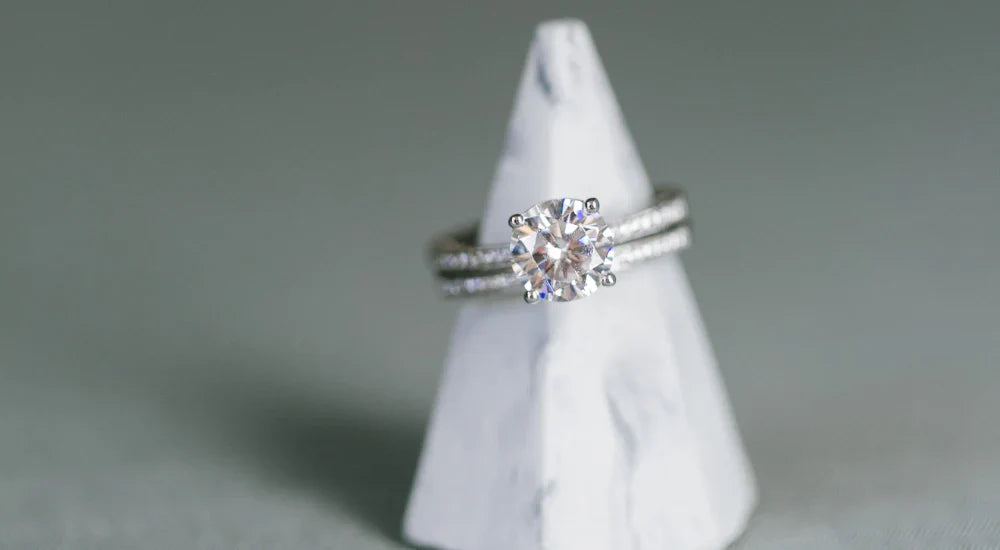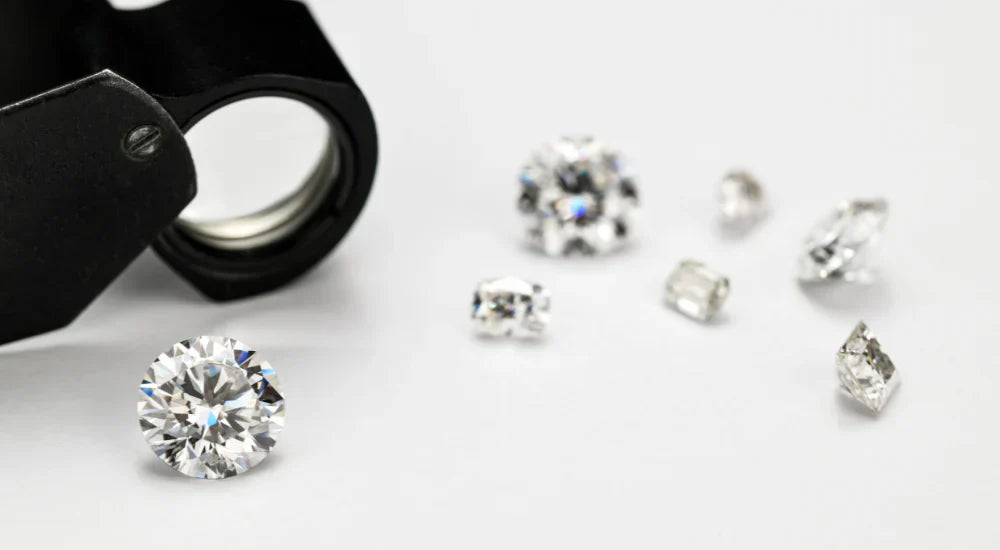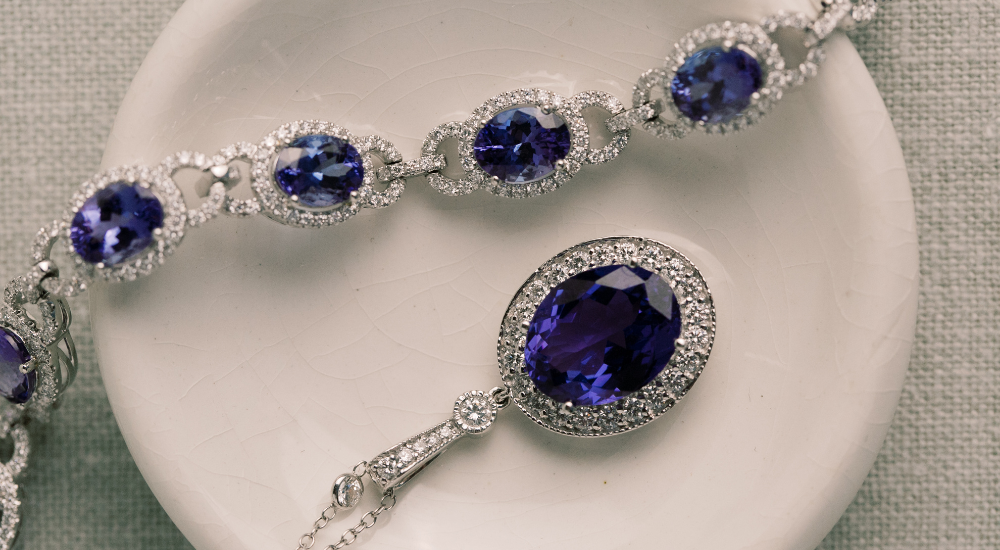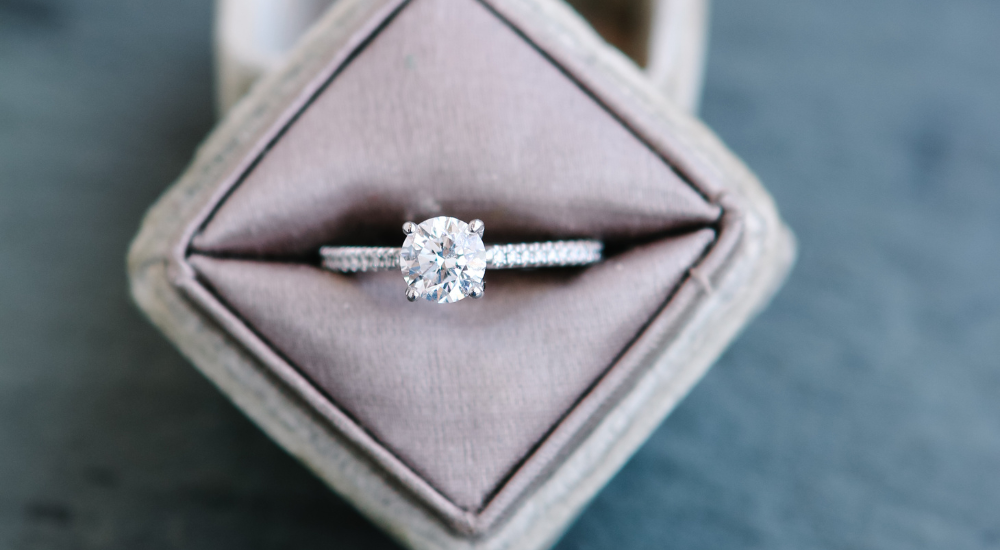The Pros and Cons of Lab-Grown Diamonds

Weighing the Pros and Cons of Lab-Grown Diamond
Have you heard about lab-grown diamonds? There has been a lot of buzz surrounding them for the past few years. Maybe you’ve heard about them and you’re wondering if buying a lab-grown diamond is worth it or if you should stick to natural diamonds.
There are pros and cons to purchasing lab-grown diamonds, and it’s important to understand both when deciding what to purchase. After all, buying a diamond is one of the most significant purchases most of us will ever make!
If you’ve been researching online, it can be hard to know who to trust when it comes to this subject. Most retailers are leaning one way or another and are producing content to support their choice.
Here at Koser Jewelers, we have always felt strongly about offering beautiful, natural diamonds to our customers. However, we also offer lab-grown diamonds. We believe you should be educated about both options and choose the one that works the best for you.
Here are some of the pros and cons of purchasing lab-grown diamonds.
The Pros of Lab-Grown Diamonds
Lab-Grown Diamonds are “Real” Diamonds
Contrary to what you might assume, lab-grown does not mean fake. A lab-grown diamond is essentially the same thing as a natural diamond. So, buying a lab-grown diamond is preferable to purchasing a synthetic option, such as a cubic zirconia.
A lab-grown diamond is chemically and physically a diamond. It is grown in a controlled environment using technology that replicates the natural diamond process. Lab-grown diamonds look the same as natural diamonds. The only difference is their origin.
Since lab-grown diamonds are essentially the same as natural diamonds, they have the same properties, such as hardness. Both lab-grown and natural diamonds rank as a 10 on Mohs scale. That means that you can have the same peace of mind wearing a lab-grown diamond every day as you have wearing a natural diamond.
Lab-Grown Diamonds are Less Expensive
Another “pro” of lab-grown diamonds is the price. Lab-grown diamonds are not inexpensive, but they can be competitively priced when compared to equivalent natural diamonds. While the capital costs for lab-grown diamonds are similar to natural, the supply chain is significantly shorter. Since lab-grown diamonds skip the mining process, they touch less hands along the way – ultimately resulting in a less expensive diamond.
Natural diamonds’ prices also represent their rarity. Natural diamonds form deep in the earth and rely on volcanic eruptions deep to bring them close enough to the surface to be mined.
Since lab-grown diamonds are man-made (made with a combination of science and technology), they are not dependent on nature. That means that lab-grown diamonds are more abundant, which makes them lower in price. 
The Cons of Lab-Grown Diamonds
Lab-Grown Diamonds Might Be a Bad Financial Decision
When you buy a natural diamond, you are purchasing something that will retain value over time. That’s not so with lab-grown diamonds.
As we mentioned, lab-grown diamonds are man-made diamonds that are created in a laboratory or factory. The technology is new, “cutting edge,” and expensive – at the moment.
But something to consider is that – historically, all new technology starts out being expensive, and then becomes more streamlined and then gets very inexpensive. That means that, in the future, lab-grown diamonds might be very inexpensive – which means the value of ones purchased today will also plummet.
Plus, lab-grown diamonds are not finite like their natural counterparts, so there is no guarantee that they will hold any value in the future because their supply will always be high.
So, let’s look at an example. Say you pay $5,000 for a 1-carat lab-grown diamond today instead of $7,000 for a natural one. Sure, you might save some money today by purchasing a lab-grown diamond, but it may be worth next to nothing in the future.
In contrast, when you purchase a natural diamond, it retains its value forever. At Koser Jewelers, we allow you to trade your diamonds in on future diamond purchases for the same price you paid… for a lifetime!
However, we cannot accept trades on lab-grown diamonds. The future value of lab-grown diamonds is simply not reliable. (And yes, we have a fancy “tester” that can detect the difference.)

Lab-Created Diamonds Lack the Allure of Natural Diamonds
Another big reason to think twice before purchasing a lab-grown diamond for your proposal: many women just don’t want them. Think knock-off Louis Vuitton vs. the real thing!
Nationwide surveys show that the vast majority of women still want natural diamonds. In a 2018 survey by the Diamond Producers Association (DPA) and The Harris Poll, only 16 percent of women claimed that they believed lab-grown diamonds were “real” diamonds. This is another reason why 90% of the diamonds we choose to carry are natural. Surveys (and our personal interactions with guests) have shown us that man-made products are simply not what people want.
The allure of diamonds has always been that they are an amazing, natural product of the earth that took millions of years to form. That appeal is lost when they are mass-produced in a laboratory, or worse – a factory.
Lab-Grown Diamonds May Not Be The Eco-Friendly Choice
The biggest rationale many people have for choosing man-made diamonds is that they believe they are better for the environment. But this is controversial and the evidence on both sides of the issue can be misleading.
Lab-grown diamonds require a tremendous amount of energy to create. They are mostly produced in factories by machines that require constant power. While there is a substantial range of energy usage between different factories, there is nothing that suggests that man-made diamonds are an environmentally friendly choice.
The Federal Trade Commission (FTC) says lab-grown diamond companies’ claims of eco-friendliness are “difficult to substantiate.” The FTC has also issued several warnings in the past year to jewelry brands claiming that lab-grown alternatives are sustainable.
Furthermore, many have questioned the lack of transparency in the lab-grown diamond sector. A 2019 Forbes article on the industry said:
“Many laboratories are using potentially harmful gases such as methane to extract carbon, with little transparency about how this is sourced and managed, and the process itself is highly energy-intensive, requiring giant ‘ovens’ to run at around 2000 degrees Fahrenheit.”
While it may not be apparent which has the lower environmental impact – mining or lab-creating – it certainly isn’t true that lab-grown is necessarily the more “sustainable” choice.
Choose a Jeweler Who Prioritizes YOU
At Koser Jewelers, our first priority is taking good care of our customers. We pride ourselves on always doing what’s best for YOU.
As outlined, we believe that lab-grown diamonds may not be a good financial choice because they may not retain value in the future. We also think they lack the romance and allure of natural diamonds while not necessarily providing any environmental benefits (this is still up for debate).
However, we also recognize that lab-grown diamonds are more appealing to some customers for various reasons. Whether you are looking for a natural diamond, a lab-grown diamond, or just aren’t sure yet – Koser Jewelers is here to help! Set up an appointment today with our Bridal Specialist who will answer all of your questions and guide you through every step of the process with ease!




